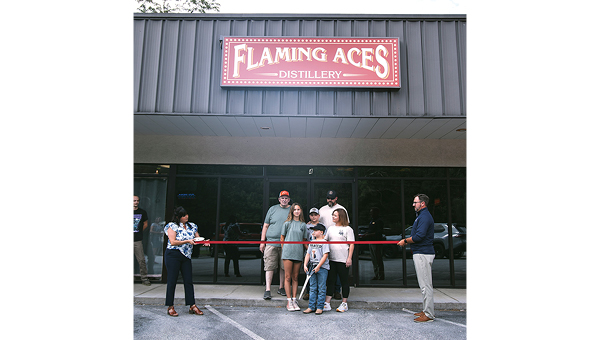Women make up 36.9 percent of farmers in Carter County
Published 9:29 am Friday, March 28, 2025
|
Getting your Trinity Audio player ready...
|
As Women’s History Month highlights the contributions of women across industries, a quiet transformation is unfolding in American agriculture. Female farmers are taking on a larger role in shaping the future of farming, contributing to both local economies and national food production.
Recent data from the U.S. Department of Agriculture reveals a steady rise in the number of women involved in farm decision-making and management. From small family farms to large commercial operations, women are increasingly present in agricultural leadership. As this shift continues, certain parts of the country stand out for having a higher concentration of female farmers.
This report, conducted by food and beverage software provider Trace One, examines where women are making the biggest impact in agriculture, analyzing the states with the highest share of female producers and female-operated farms.
Trending
Over the past two decades, the share of female farmers in the United States has steadily increased. According to data from the most recent Census of Agriculture, women now make up more than a third of all agricultural producers, a notable rise from 26.9 percent in 2002.
A key turning point came with the 2017 Census of Agriculture, which expanded the definition of producers to provide a more comprehensive picture of the people involved in farm decision-making. As a result, the recorded number of female producers increased significantly from 969,672 in 2012 to 1,227,461 in 2017, in part due to this broader definition.
Despite this change in methodology, the data also show a clear long-term trend: The number of male producers has been declining since 2007, when it peaked at 2.3 million. By 2022, that number had fallen to 2.15 million, continuing a downward trajectory. Meanwhile, the share of female producers has grown consistently across every census—from 30.0 percent in 2007 to 30.5 percent in 2012, even before the definitional change in 2017 pushed it higher to 36.1 percent. The 2022 census confirmed that this upward trend has continued, with women now accounting for 36.3 percent of all producers.
While there are a record number of female farmers in the U.S., their presence varies significantly across different farming industries. Female producers are most concentrated in livestock operations involving smaller animals, specialty crops and greenhouse production, while they have lower representation in large-scale commodity farming.
Women have the highest representation in sheep and goat farming, where they make up 46.1 percent of all producers, followed closely by aquaculture and other animal production (44.9 percent). This category includes horse farming, which has historically had strong female participation. Poultry and egg farming also has a high share of female producers (43.2 percent). While large-scale poultry production is dominated by major agribusinesses, smaller-scale poultry operations—such as those focused on pasture-raised eggs, organic poultry or specialty breeds—are also common.
Additionally, female producers are well represented in vegetable and melon farming (39.3 percent), greenhouse and floriculture production (39.3 percent), and fruit and tree nut farming (38.0 percent). These sectors frequently involve intensive management, diversified crop production and specialty markets, which may attract more women.
Trending
In contrast, female representation is lower in commodity crop production and large-scale livestock operations. Women account for just 27.5 percent of cotton farmers, 25.9 percent of oilseed and grain producers, and only 21.2 percent of tobacco farmers—the lowest share among all major agricultural sectors. Similarly, industries that require large-scale infrastructure, such as cattle feedlots (28.4 percent) and dairy farming (29.9 percent), have lower female participation rates.
Here is a summary of the data for Carter County, Tenn.:
– Female producers as a share of total: 36.8 percent
– Female-operated farms as a share of total: 58.6 percent
– 10-year change in female producers: +46.5 percent
– 10-year change in female-operated farms: +40.6 percent
– Total female producers: 249
– Total female-operated farms: 232
– Total producers: 677
– Total farms: 396
Female farmers are not evenly distributed across the country. The Western United States and the Northeast have the highest concentrations of female producers, while much of the Midwest and parts of the Southeast have the lowest.
Arizona leads the nation, with 47.9 percent of its agricultural producers being women. Other Western states also rank high, including Alaska (47.6 percent), Oregon (44.0 percent) and Nevada (42.7 percent). In the Northeast, states such as New Hampshire (44.8 percent), Maine (43.1 percent) and Rhode Island (42.9 percent) also have a high share of female producers. These regions tend to have a greater proportion of smaller farms, direct-to-consumer markets and diversified operations, which may offer more opportunities for women.
In contrast, the Midwest has the lowest share of female farmers, with the bottom five states being Illinois (28.0 percent), North Dakota (29.9 percent), Minnesota (31.0 percent), South Dakota (31.2 percent) and Iowa (32.7 percent). The Southeast also has relatively lower concentrations, with North Carolina (33.3 percent), Mississippi (34.4 percent), Alabama (34.7 percent) and several other Southern states ranking below the national average. These regions are home to large-scale commodity crop operations—such as corn, soybeans and commercial livestock—which historically have had lower female representation.





